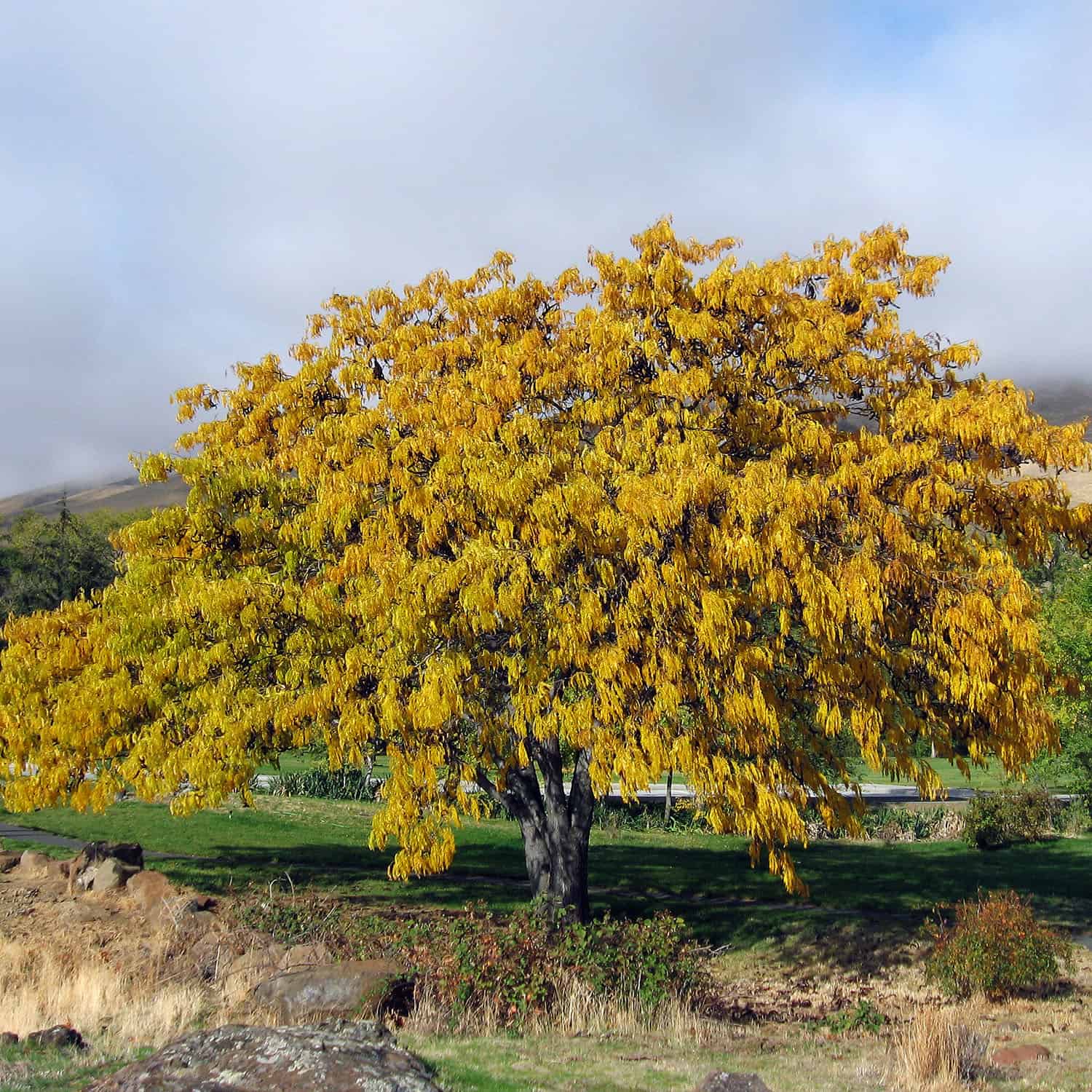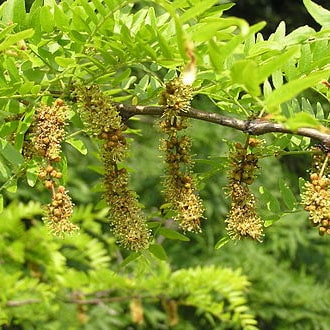| Weight | N/A |
|---|---|
| Dimensions | N/A |
| Botanical Name | Gleditsia triacanthos 'Hershey' |
| Zone | 3-9 |
| Soil | Drought, wind and salt tolerant but does not do well in saturated cold clay soil, so plant on a southern hillside slope on a mound if you have heavy wet clay. Does well in sand or loam. Grows a large deep root system over time. |
| Light | Full sun or partial shade. Shaded trees will grow more slowly |
| Pollination | Self fertile although grafted cuttings from male or female branches can be male or female |
| Height | 50-80 feet at maturity |
| Bloom | Small inconspicuous yellow green flowers cover the tree for up to three weeks starting in May in southern reas and mid June further north. Flowers smell like honey and will attract many pollinators. |
| Ripening Time | September in southern areas, October in the north. Pods will continue to fall throughout the winter months. |
| Fruit | Large pods high in sugar and smell like honey.Edible for humans, livestock (esp pigs) and wildlife (favorite of deer). Can be used similarly to dates for sugar, easy drying. |
| Pollinator Friendly | Yes |
| Special Notes | Dappled light shade of the honey locust makes it an ideal tree for silvopasture, providing light shade for forage plants below and food crop for livestock. Both ground pods and seeds are highly digestible (78.7 and 96.3%, respectively), and seeds, with over 20% crude protein, provide some additional protein to grazing It can also be grown over fruiting trees such as plums, or hazelnuts, or even over flowers like roses. Flowers provide major food source for pollinators and will attract pollinators to any orchard. Nitrogen fixing nodules and excellent organic matter to feed the soil beneath the tree as well. Unlike black locust which is a pioneer tree with a relatively short lifespan (80 – 100 years) Honey locust live to be upwards of 300 years old. Honey loust (not thornless) is used in many places as a hedgerow to keep out deer and other animals and feed bees. Beekeepers using the tree this way report up to 200lbs of honey per acre of tree 'fence' plantings along forest edges and surrounding other crops. |
Honey Locust (Hershey Thornless)
$16.00
Gleditsia triacanthos “Hershey”. These Hershey honey locust seedlings produce huge crops of delicious pods, make excellent rootstock for all grafted honey locust varieties, and will produce quality pods on their own.
They are grown from hiqh quality Hershey thornless seed and will usually be thornless like the parent. If a seedling does develop thorns, it can be coppiced and top grafted with thornless scion wood or left with thorns to reduce tree damage from rubbing animals. But most of these seedlings will remain thornless. They produce high quality, nutrient dense pods, profuse buttery cream colored flowers in late Spring and are fast and robust growers.
Excellent trees for silvopasture systems as they provide dappled shade allowing forage to continue to grow under them as well as providing nitirogen to the soil. In fall their large high sugar content pods provide high nutrition fodder for grazing animals or poultry, and are even edible by humans.
Plant honey locust in fruit orchards to improve soil tilth and soil nutrition and attract pollinators with their large clusters of highly scented butter colored blossoms in late Spring.
Honey locust are hardy and robust trees which can grow to 70 feet tall with widespread branches that spread from 35 to 60 feet. Their fast growth, dappled shade and tolerance to hostile and colder conditions has made them a popular urban tree across the northern US.
Whether you’re planting your honey locust to improve pollinator habitat, provide dappled shade and nitrogen fixing for soils on pasture, as a fodder crop tree or simply as a beautiful landscape specimen you will fall in love with the honey locust as it quickly establishes and grows into a beautiful tree.



Reviews
There are no reviews yet.